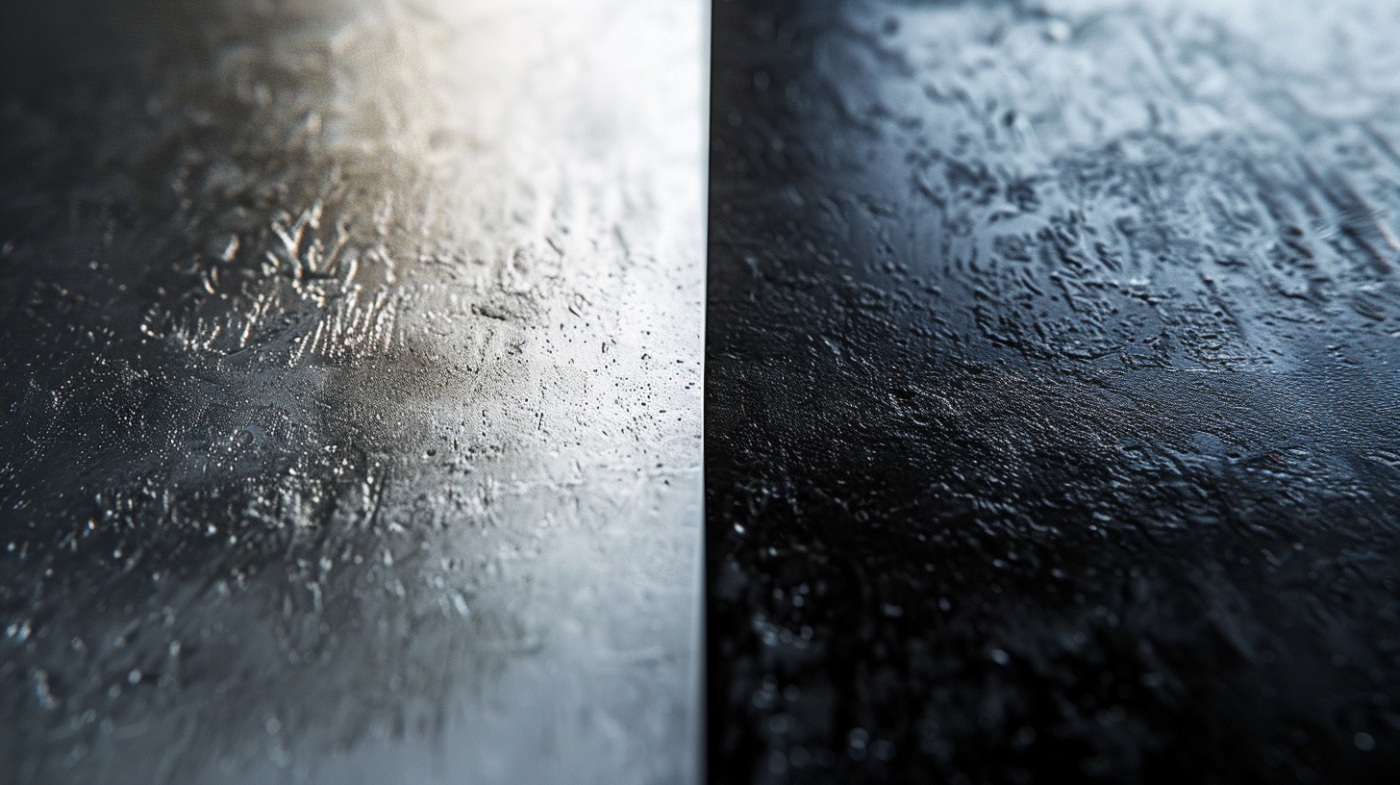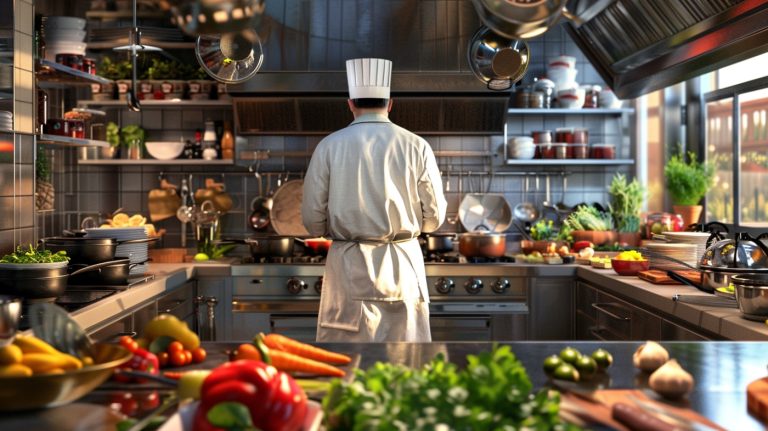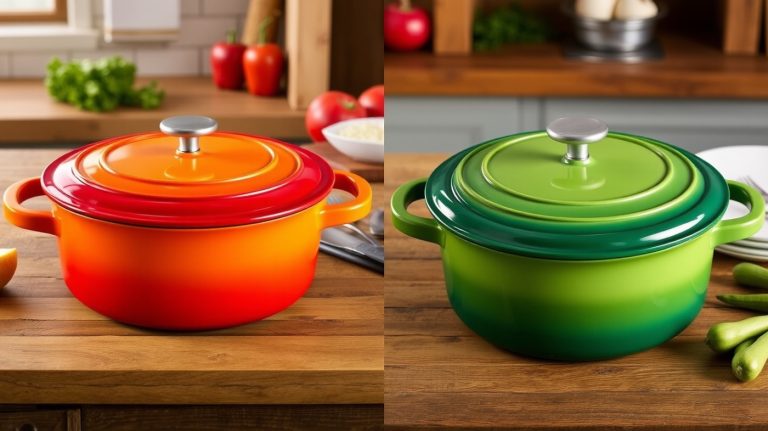Carbon Steel Vs Stainless Steel: Material Showdown
When comparing carbon steel and stainless steel, you’ll find key differences in composition and properties. Carbon steel is primarily iron and carbon, making it strong but prone to rust without maintenance. In contrast, stainless steel contains at least 10.5% chromium, providing excellent corrosion resistance.
While carbon steel excels in high-stress applications due to its tensile strength, stainless steel offers superior durability and ductility, especially in moist environments. Additionally, carbon steel is generally more affordable and widely available. Understanding these nuances can help you choose the right material for your project or application. Explore further to uncover more insights.
Key Takeaways
- Carbon steel is more affordable, costing 70% less than stainless steel, making it suitable for budget-conscious projects.
- Stainless steel offers superior corrosion resistance due to its chromium content, making it ideal for moist or hygiene-critical environments.
- Carbon steel provides higher tensile strength but requires regular maintenance to prevent rust and wear over time.
- Stainless steel maintains strength and ductility in high-temperature and high-stress situations, outperforming carbon steel in durability.
- Both materials have distinct applications: carbon steel is common in construction, while stainless steel is preferred in kitchens and medical settings.
Material Composition
When comparing carbon steel and stainless steel, understanding their material composition is vital. Carbon steel primarily consists of iron and carbon, with carbon content varying from 0.05% in low-carbon steel to 3% in ultra-high-carbon steel. This carbon content directly influences the hardness and strength of the material, making it suitable for various applications based on specific requirements.
In contrast, stainless steel contains a minimum of 10.5% chromium by mass, which is essential for its corrosion resistance. Additionally, alloying elements like nickel and molybdenum enhance its mechanical properties, contributing to its ductility and tensile strength. This makes stainless steel more versatile, particularly in environments where durability and aesthetic appeal are important.
While carbon steel’s composition lacks significant amounts of corrosion-resistant metals, it leads to greater susceptibility to rust and oxidation, especially in moist conditions.
Different types of carbon steel—low, medium, and high-carbon—exhibit distinct mechanical properties, allowing for tailored applications. Therefore, by analyzing the material composition of each type, you can make informed decisions regarding their suitability for specific tasks.
Corrosion Resistance
Corrosion resistance is a critical factor that sets stainless steel apart from carbon steel in various applications. Stainless steel contains a minimum of 10.5% chromium, which forms a protective oxide layer on the surface, greatly enhancing its resistance to rust and corrosion. This characteristic allows stainless steel to excel in environments where exposure to moisture and other corrosive elements is common.
In contrast, carbon steel lacks sufficient chromium content, making it vulnerable to rust when subjected to humid conditions or direct exposure to water. You’ll find that this vulnerability necessitates regular maintenance for carbon steel, such as oiling or applying protective coatings, to mitigate corrosion and prolong its lifespan.
The superior corrosion resistance of stainless steel makes it the material of choice for critical applications, such as kitchen appliances and medical instruments, where hygiene and cleanliness are paramount.
Additionally, in marine environments, stainless steel outperforms carbon steel due to its enhanced ability to withstand saltwater corrosion and oxidation. Consequently, when choosing materials for projects exposed to corrosive environments, stainless steel proves to be a more reliable and durable option.
Strength and Durability
Although both carbon steel and stainless steel are known for their strength, they exhibit distinct characteristics that influence their suitability for different applications. Carbon steel typically offers higher tensile strength, making it ideal for high-strength requirements. However, it’s more prone to wear and tear, demanding regular maintenance to guarantee longevity.
On the other hand, stainless steel maintains its strength even at elevated temperatures and demonstrates greater ductility, allowing it to withstand deformation better than carbon steel. This makes stainless steel particularly advantageous in environments that face high heat or stress.
| Steel Type | Strength Characteristics | Durability Factors |
|---|---|---|
| Carbon Steel | Higher tensile strength | Susceptible to wear and tear |
| High-Carbon Steel | Achievable hardness for tools | Requires maintenance |
| Low-Carbon Steel | Softer, more machinable | Less durable in demanding settings |
| Stainless Steel | Maintains strength at heat | Corrosion-resistant, durable |
| General Comparison | Varies by carbon content | Stainless preferred in moisture |
Cost and Availability
The cost and availability of carbon steel and stainless steel play significant roles in determining their application across various industries. Generally, carbon steel is much less expensive than stainless steel, often costing up to 70% less due to its simpler production processes.
For instance, while carbon steel pans typically range from $30 to $70, stainless steel pans can start at $25 and exceed $200 based on quality and features.
Market demand substantially impacts the pricing and availability of both materials. You’ll find that carbon steel is more widely available in various forms and grades, making it easier for you to source for projects.
Additionally, bulk purchasing of either material can lead to reduced costs, enhancing accessibility for larger projects or consumers.
It’s important to note that ultra-high carbon steel can sometimes match or even exceed the prices of stainless steel, indicating that specific carbon steel types can be more costly than certain stainless steel options.
As a result, when budgeting for materials, it’s vital to take into account both the type and intended use, as these factors will greatly influence your overall expenditure.
Applications and Uses
Various industries leverage the unique properties of carbon steel and stainless steel for specific applications. Carbon steel is often your go-to for construction and manufacturing, thanks to its high strength and hardness. You’ll find it in tools, machinery, and structural components. For high-stress applications like springs or cutting tools, high-carbon steel shines due to its toughness and wear resistance.
On the other hand, stainless steel excels in environments requiring hygiene and corrosion resistance. You’ll see it extensively used in kitchen appliances, medical instruments, and food processing equipment. In the automotive sector, both types of steel play significant roles. Carbon steel typically forms structural components, while stainless steel is chosen for exhaust systems due to its resistance to corrosion.
To summarize these applications, here’s a quick comparison:
| Type of Steel | Common Applications | Key Properties |
|---|---|---|
| Carbon Steel | Construction, manufacturing | High strength, hardness |
| High-Carbon Steel | Springs, blades, cutting tools | Toughness, wear resistance |
| Stainless Steel | Kitchen appliances, medical tools | Corrosion resistance, hygiene |
| Automotive | Structural parts, exhaust systems | Durability, performance |
This table highlights the versatility of both steel types in various fields.
Frequently Asked Questions
How Do Carbon Steel and Stainless Steel Impact Food Safety?
When considering food safety, you’ll find that materials’ reactivity and maintenance greatly impact hygiene. Non-reactive surfaces minimize contamination risks, while proper upkeep prevents rust, ensuring safer food preparation and storage in your kitchen.
Can Carbon Steel Be Used for Outdoor Applications?
Yes, you can use carbon steel for outdoor applications, but it needs a little extra care. Applying protective coatings and conducting regular maintenance can keep it strong and resistant to rust, ensuring longevity in challenging environments.
What Are the Environmental Impacts of Carbon Steel Vs Stainless Steel?
You’ll find that carbon steel’s production emits fewer pollutants and is more recyclable, while stainless steel’s higher energy demands and alloy mining lead to greater environmental impacts, despite its durability and corrosion resistance advantages.
How Do I Properly Maintain Carbon Steel Cookware?
To maintain carbon steel cookware effectively, remember that 40% of users report rust issues due to improper care. Always season with oil, hand wash without soap, dry thoroughly, and store in a moisture-free environment.
Are There Any Health Risks Associated With Using Stainless Steel?
Using stainless steel generally poses no significant health risks when properly maintained. However, if you have nickel sensitivities, you might experience allergic reactions. Regular cleaning helps mitigate bacteria accumulation, ensuring safe food preparation and medical use.
Steel Selection Simplified: Making the Informed Choice for Lasting Results
In choosing between carbon steel and stainless steel, you’re not just picking materials; you’re selecting the perfect ally for your projects. Each has its unique strengths, with carbon steel offering robust durability at an attractive cost, while stainless steel shines with its resistance to corrosion.
By understanding their distinct properties and applications, you can confidently make an informed decision that will elevate your work and guarantee lasting results. Choose wisely, and let your projects flourish.







